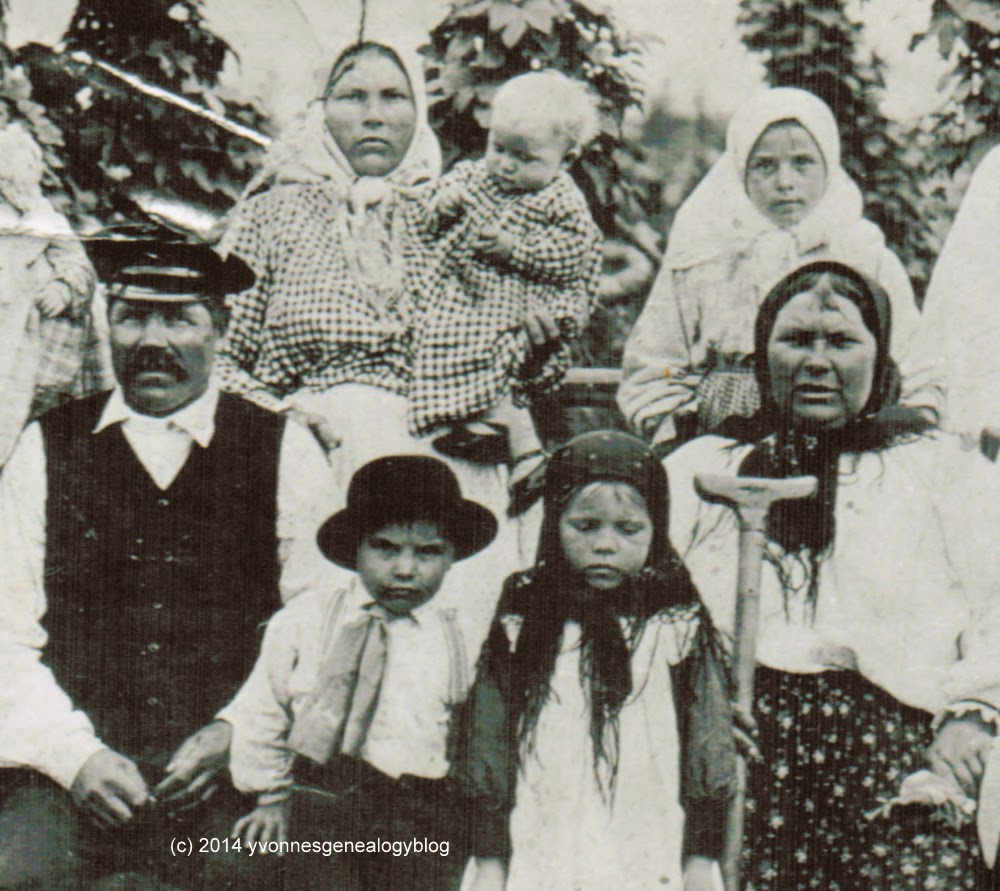 |
| Juliette (Beauvais) Desgroseilliers, 1930s |
Today – June 30th – is the 113th anniversary of my maternal grandmother Juliette’s birth.
Juliette, baptised “Julie Marie”, was born on 30 June 1901 in the village of Chénéville, Papineau County, Quebec. She was the third child and eldest daughter of Joseph Beauvais and his wife Olivine Hotte.
My aunt Madeleine (Mom’s sister) gave me this photo, which I saw for the first time when I visited her during my recent trip to Ontario.
The first thing I notice about this picture is how casual my grandmother Juliette is. I’m also struck by her youth and beauty. I see a strong resemblance between her and her youngest daughter Jeanne d’arc.
Juliette appears confident as she looks straight at the camera. She is young, probably in her 30s. She is dressed stylishly and wears white pumps. There’s a large floral decoration at her right shoulder. I think I see a barrette (hair clip) in her hair, as well as a necklace, and a ring (her wedding ring?) on her left hand.
If I’m right about her age, the photo was probably taken in Hearst, Ontario, between 1927 and 1936, but more likely 1931 to 1935. The house number “205” is seen above the door. Is this her home, where she lived with her husband Eugène and their children?
I wonder why this picture was taken – could it be her birthday?
So many questions, so few answers.
Copyright © 2014, Yvonne Demoskoff.





















